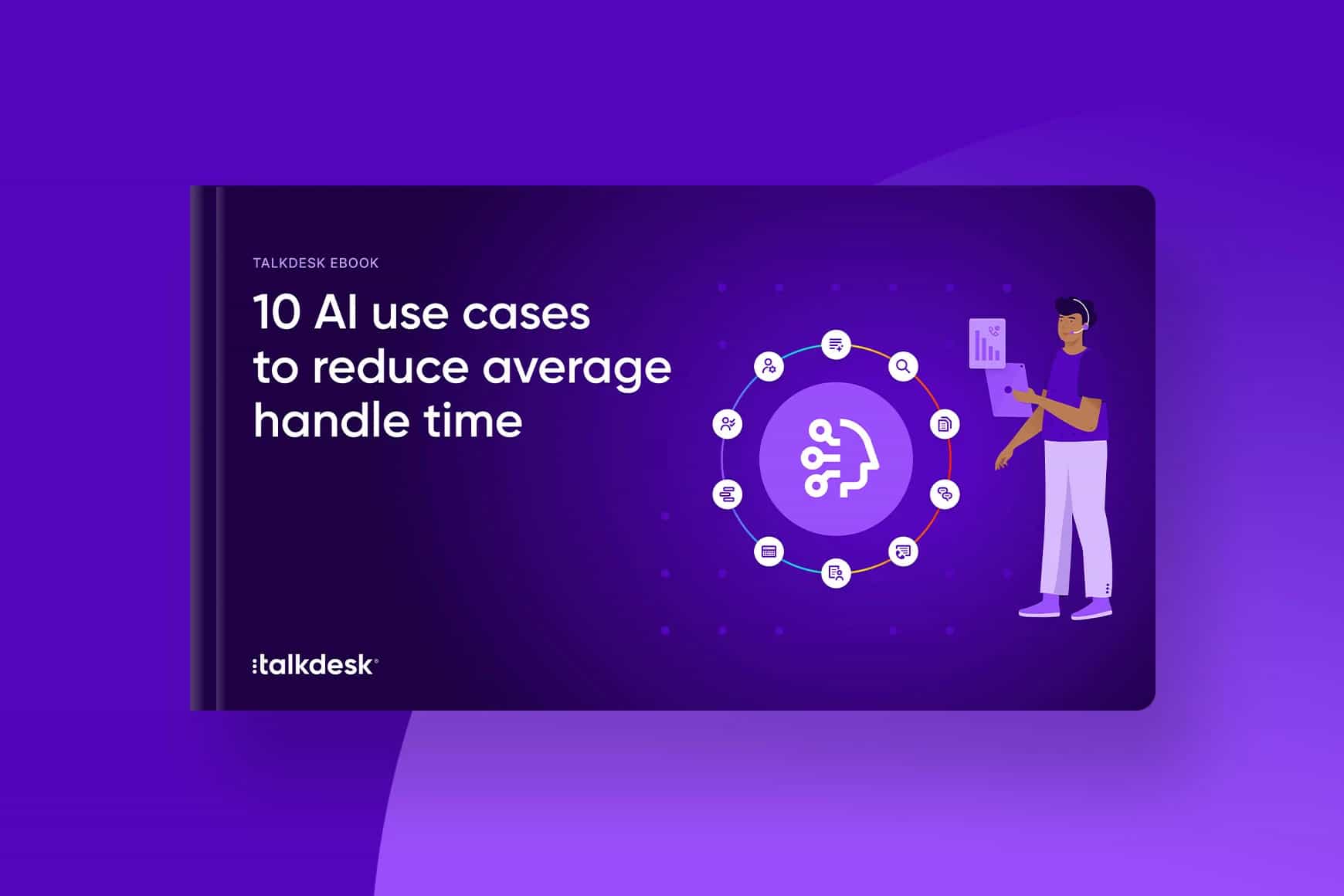What is Call Wrap Up Time? 5 Ways to Reduce It in Your Contact Center

By Taylor Johnson
0 min read

Reducing average wait time and average handle time in your contact can yield huge customer satisfaction increases for your business. One important way to reduce these important call center metrics is by reducing the amount of work it takes to wrap up previous customer interactions so that your agents are freed up to handle the next one. In this blog, we outline what call wrap up time is and actionable steps you can take to reduce it in your contact center.
What is Call Center Wrap-Up Time?
Call wrap-up time is the amount of time that a call center agent spends doing follow up tasks in order to complete a customer interaction. This include activities like adding notes into a CRM; speaking with a manager if they have unresolved questions; and toggling between systems to get ready to handle the next customer.
Wrap up time is included in overall average handle time, or the total amount time elapsed from the moment the agent answers a call or interaction until they finish post-call activities. In order to calculate agent wrap-up time from handling time, you can use the following formula:

Calculating Average Wrap-Up Time
Average Wrap-up Time can be calculated across teams, departments or the entire call center by substituting total handling time, total hold time and total talk time and dividing that number by the total number of calls (or interactions) received in a given period:

Of course, these calculations will only provide broad numbers about how much time your contact center agents are spending flagged as after-call work time by your call center software, not specifics about how they are spending that time.
How Wrap-Up Time is Spent
Globally, the call center industry standard after-call work time is about six minutes. Typically that results from the time agents spend on post-call work like updating the system with details about call resolution, any next steps that are required and customer notes, and discussing resolution issues with their managers. The agent may need to email the customer or another department, or place additional outbound calls to the customer to discuss their issue further. Along with average handle time, this is a key performance indicator for agents since the amount of wrap-up time required for each call takes away from the amount of time they are available to take further inbound calls.
How to Reduce Average Wrap-Up Time
There are a number of ways that contact centers can reduce the time their agents spend on after call work. Here are the top 3 ways that have been proven to reduce wrap-up time:
1. Integrating Your Contact Center and CRM Software
One of the most effective ways to reduce wrap up time is to integrate your contact center and CRM platforms. Talkdesk Callbar® sits on top of leading CRMs like Salesforce and allows agents to easily add notes without toggling between browser windows and computer screens. Check out our full list of over 50 contact center software integrations.
2. Call Center Agent Training
The more prepared that agents are to manage customer calls, tools available in the call center software, and the necessary post-call tasks, the more likely they are to keep average handling time down as well as achieve the contact center holy grail: first call resolution. Agents can be trained to complete some of their wrap-up work during the call, but care should be taken that they don’t get distracted from customer needs. Check out our recent blog on 15 Effective Tips for Training Call Center Agents.
3. Speech Analytics
More call centers are turning to real-time speech analytics to analyze customer mood and statements made during the call to help reduce how much time agents spend on reports both during and after the call. Artificial intelligence can greatly reduce handling time by automatically filling in required fields in customer data and call records, or sending automated messages to customers or other departments.
4. Misused After Call Work Time
Case studies show that unscheduled activities often contribute to after call work time, which is why your numbers might not be entirely accurate. Agents may use part of their post-call time to check their personal phones, run to the bathroom or grab a snack from the kitchen. Call center managers can use coaching and other techniques to reduce any unnecessary wrap-up time in order to help keep overall handling time low and customer satisfaction high.
5. Automated Agent Assist
Agents are extremely busy when interacting with customers, so providing automated recommendations can significantly reduce call wrap up time. Talkdesk Agent Assist actively listens to conversations and provides recommendations based on machine learning and AI that can dramatically reduce the amount of post-call work that agents must perform to complete out a customer interaction.
Next Steps for Your Contact Center
Call center wrap-up time is a key performance indicator that is just as critical to your bottom line as average handle time and other metrics such as shrinkage, average wait time and first call resolution. Find out how Talkdesk contact center software can help you monitor and track wrap-up time and achieve your performance goals.

EBOOK
10 AI use cases to reduce average handle time
Download our eBook now and take the first step towards enhancing your contact center’s efficiency.








